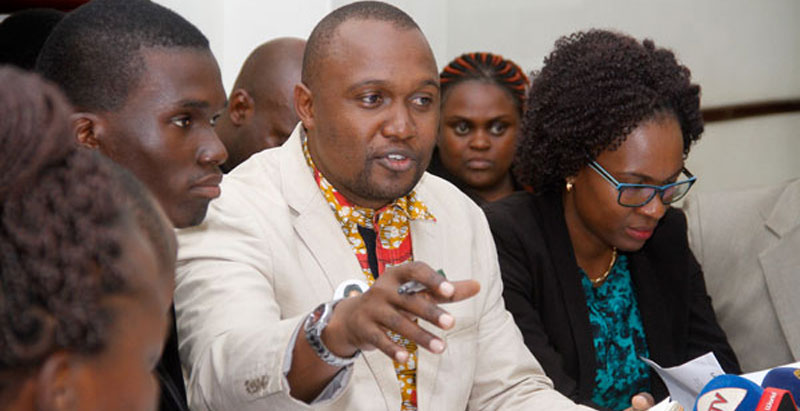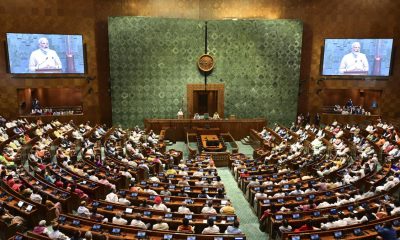Analysis
Doctors strike: Why higher pay alone can’t fix healthcare
More than better salaries will deliver healthcare
The strike by health workers in most government hospitals has paralysed the country and locked millions of Ugandans from accessing perhaps the most important social services expected of government by the citizens.
Health workers across the country downed their tools over the government’s failure to honour its pledge of raising their salaries and allowances.
The death of a number of people immediately after the medics announced their industrial action can not be entirely attributed to the absence of medics. However the impact could be judged from the overwhelming number of people who flood the facilities seeking treatment of various forms.
In fact, not before in President Yoweri Museveni’s 32-year rule, have we witnessed the absence of medics for this long. The timing of the strike, coming at the time the government is seeking to extend its stay in power, has attracted conclusions that medics might be answering the Opposition’s call against the amendment of the Constitution article 102 dubbed Togikwatako.
The doctors’ industrial action is happening at the same time when public prosecutors are striking over pay, a situation that has equally paralysed the criminal justice system and caused abuse of the rights of hundreds of thousands through failure to speedy trial.
But the doctor’s strike, is one that draws no comparisons as its effect is seen in the death of innocent lives. This is because government facilities offer treatment at relatively lower cost, but also that, some specialised services such as cancer and heart treatment, are uniquely provided by public health facilities.
The doctors strike however came against the background of what many consider to be an ailing public health sector characterised by congested, filthy wards, poorly staffed and under-equipped health facilities.
The dire situation in most public health facilities has been made worse over the years by widespread corruption, theft of government-procured medicines, poor supervision and maladministration.
As the public health sector rot, the private health facilities boomed, aided by the government’s market-inspired ideology of free entry and exit. The ideology that allowed providers of public services such as healthcare and education to the population often with no regulatory framework, exposed patients and parents to exploitation by the private providers.
The doctors were left to extract as much as they could from their unsuspecting patients without any sense of shame. The more desperate one appears, the greater the opportunity for the medic to impose the ‘penalty’ of falling sick. The current laissez-faire system perfectly captures what economists describe in their theory of information asymmetry.
The theory states that the imperfect information between sellers and buyers leads to inefficient outcomes.
The health system in Uganda is a perfect example of an imperfect information environment where doctors possess far more information than their patients and are therefore more likely to charge more than they ordinarily would be expected to do.
Because patients have little information about their health compared to the doctor – the more informed party, they are in better position than the patient to extract money not even negotiate for faire rates charges.
In a nutshell, left to their own devices, doctors have proved to be predators by overcharging patients.
For example, Mengo hospital recently organised a medical camp where up to a number of people were operated on by both staff of the hospital with assistance from foreign health volunteers.
Out of the 36 people who were operated, three people failed to regain consciousness and two eventually passed away including the former Member of Parliament for Kyaddondo Isa Kikungwe.
It was shocking to hear that the hospital asked parents of one of the deceased Belinda Mukalazi to clear a bill worth some 13 million before they could be given the body for burial.
How could a family that sought free or subsidized treatment be expected to raise Ushs13m? We learnt that after negotiations, the family paid some six million and was made to sign commitment papers to pay the balance later so that they could be given the body for burial.
There are numerous examples of the kind across many private health facilities where patients are put in virtual detention wards for failure to clear bills. Often these bills come as a result of prolonged stay beyond the patients expectations, but also through clandestine procedures that lead to escalation of charges.
Take for instance, if a mother gives birth to a baby which develops complications, in many cases the baby will be put in a nursery to stabilize. The experience of many people however is that this tends to result into an escalation of the cost with just a few days of infant care, often beyond the capacity of the patient.
A number of people have told stories of how some doctors in private hospitals insist that a mother delivers by caesarean section when she would have delivered normally.
There have also been reports of health workers misdiagnosing diseases with the view to extracting as much money as possible. For example, many times patients have been told they are suffering from typhoid when the actual problem is malaria or another bacterial infection.
From the above examples, it is clear that a corrupt culture of exploitation has permeated into the provision of healthcare services. The escalation of costs sometimes drives people into public facilities while others resort to self medication or fall pray to cowboy unqualified doctors who masquerade as doctors of alternative medicine or herbalists.
It is not far fetched to imagine that the striking doctors from public health facilities are angered by the huge income gap between them and their colleagues working in private facilities, including those who exploit their patients.
Solutions
Several studies including by the Uganda Bureau of Statistics (UBOS) have revealed that up to 60 percent of Ugandans obtain health services from privately owned health facilities. It is clear that many are pushed to the more expensive private not out of choice by due to poor quality of service in government facilities.
This has led some social scientists to call for the return of the cost-sharing system in public health facilities. The present system and rhetoric from politicians that Uganda has free health care, is partly to blame for the poor services in most public health facilities.
Abel Ojoo, one of the people who studied the industry called for cost-sharing as the solution to current huge gap in healthcare financing.
If asked to pay some money, Ugandans are willing and able to contribute to obtaining better health services. But to prevent escalation of costs, the government must put in place a well regulated system, which could actually get money from the very rich to finance the public healthcare system.
Health insurance
Public health insurance or a system where everyone is obliged to contribute some money towards a health insurance scheme, has proved to be good way to finance the health sector. Rwanda is often cited as an shining example where small contributions by everyone, help to meet the costs of whoever falls sick.
Efforts by the government and some private players to promote health insurance in Uganda have hit a snag. Reliable sources have indicated that a number of big companies are struggling to cope with the costs incurred by associated health facilities.
A friend of mine told me that some insurance companies are struggling to pay costs because the health facilities overcharge for the services, and in other instances, the beneficiaries abuse the system.
This stresses the point that health insurance can only succeed in a well regulated environment.
Comments



























